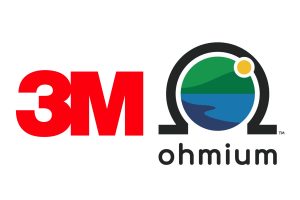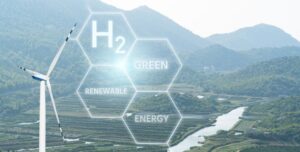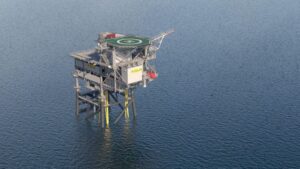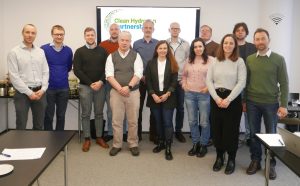Electrolysis using anion exchange membranes (AEM) is a relatively new approach. It combines the advantages of alkaline electrolysis, such as high long-term stability and the use of affordable and widely available metals, with those of proton exchange membrane (PEM) electrolysis, i.e., higher performance, adaptability to different loads, and gas purity. AEM electrolysis has not yet been successful in industrial applications because the oxygen evolution reaction (OER) involved in the process is too slow when using non-precious metals. Therefore, the necessary cell voltage for water electrolysis is very high for the desired current densities and as a result, the energy required for hydrogen production is very high.
This is the challenge that the HighHy project is addressing: the German-New Zealand collaboration is working to develop OER catalysts and, subsequently, high-efficiency AEM electrolyzers. “Together with three New Zealand universities and the University of Bayreuth, we are striving to find the ideal composition for the required catalysts,” said Dr. Christian Bernäcker, head of the Electrochemical Technology working group at Fraunhofer IFAM, summarizing the aim of the project.
Available and affordable: nickel and manganese catalyst compound
The HighHy project researchers intend to use an innovative nickel-manganese compound as an OER catalyst to produce green hydrogen on an industrial scale via AEM electrolysis. This compound boasts crucial advantages: both metals are inexpensive and readily available as raw materials. They also feature promising chemical activity. The HighHy teams are working simultaneously on potential solutions with the goal of developing an ideal compound for use in industry. Clemens Kubeil, research scientist in the Hydrogen Technology department at Fraunhofer IFAM in Dresden, where he is responsible for the project, said: “The complementary approach is quite special: the project partners are testing many different synthesis methods, compositions, surface structures and material sizes to coat the catalysts. Ultimately, the best solution will be selected and subjected to extensive testing with a demonstrator created in New Zealand.”
The Fraunhofer IFAM team is contributing its expertise in powder metallurgical strategies to this catalyst development: not only is the electrochemical activity of the catalyst important, but the electrical contact between the electrodes and the electrolyte flow must also be optimized, allowing the gas bubbles to be guided away from the electrode in the best manner possible. Know-how regarding porous structures, like those created when nickel-manganese powder is used for coatings, is a key factor here. The researchers hope that the new catalysts will reduce the amount of electrical energy required for oxygen generation and thereby improve the efficiency of AEM electrolysis.
Price, flexibility, hydrogen purity: high potential of AEM electrolysis
There is great potential for AEM electrolysis suitable for use in industry: The EU targets for electrolysis energy use in the new process are set at approximately 48 kWh per kilogram of hydrogen produced by 2030. This means that AEM electrolysis would be capable of achieving around 80% efficiency, i.e., similar values to the previously established alkaline and PEM electrolysis processes, while offering significantly greater flexibility in terms of loads driven and places of use, as well as significantly lower material costs. “The price target for the acquisition costs of the AEM electrolysis system, when calculated down to the hydrogen produced, is around 300 euros per installed kilowatt, whereas the PEM-EL comes in at around 500 euros. Even for classic alkaline electrolysis, the target is currently still 400 euros. This means that AEM-EL is the only serious electrolysis solution in terms of price,” said Clemens Kubeil. “The fact that it can be produced under high pressures due to the gas-tight membrane and the lower-concentration electrolyte and asymmetric electrolyte flow is yet another advantage. This results in the production of very pure and compressed hydrogen that is easier to feed in. In turn, this would allow systems to start up and shut down faster and operate at partial load, which is very interesting when bringing an application to the fluctuating market.”






